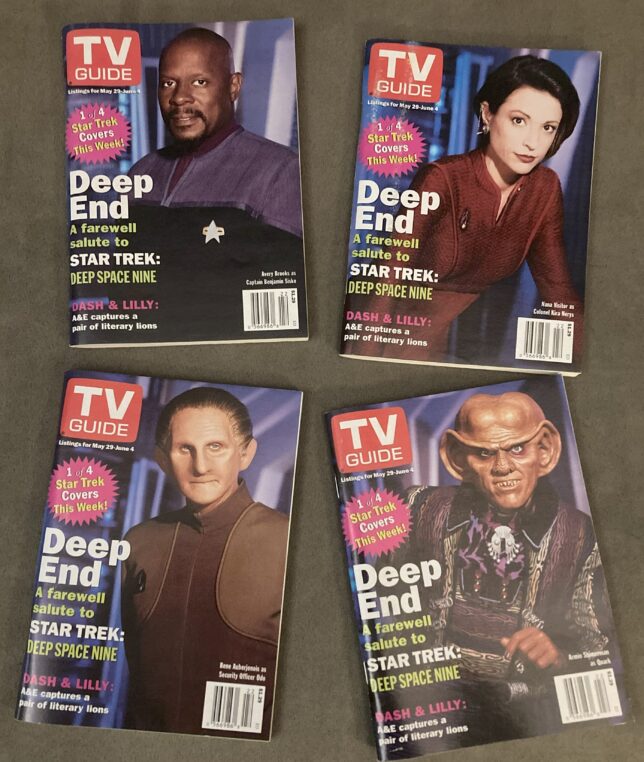When you grow up in a rural area, there’s more channels listed in the TV Guide than what you can tune in, but I still looked forward to getting the new issue every week.
Living south of Ottawa outside of any sizeable town meant there was no cable TV. It wasn’t until I was out of the house for a few years that my parents got a satellite dish. I had to settle for rabbit ears and a rotating tower TV antenna.
Our proximity to the U.S. meant we could pull in the Big Three as well as two PBS stations, weather permitting. Saturday nights were spent making adjustments to get the best picture quality – more accurately, the least amount of “snow” – so I could watch and record Star Trek: The Next Generation, Deep Space Nine and classic Doctor Who. (I developed a taste for Brit TV early in life that continues to this day). I bought piles of blank VHS tapes well into my 20s to record my favourite shows, whether they were broadcast over the air or on cable when I moved into Ottawa – and then to Edmonton, Vancouver, and Toronto.
By the time Star Trek: Deep Space Nine was wrapping its seven-year run, I was buying TV Guide with my grown-up money. There was lot more channels on cable, but it was still possible for the publication to provide listings and prime time grids for all the stations.
Over the years, however, there were fewer descriptions for the latest episode, let alone guest star highlights.
When I relocated to Toronto for a new writing gig, I got see how the sausage was made – my group of technology magazines shared the same floor as the TV Guide Canada staff, including the beleaguered listings editors. I was witnessing the beginning of the end as the everything was moved online.
What had been a thick magazine with plenty of articles and features wrapped around the listings – and the weekly crossword – atrophied into a pale version of itself. Eventually, TV listings in print became a thing of the past (there was Starweek in the Toronto Star until there wasn’t), as people got their listings from their cable providers on screen.
I kept a handful of Star Trek themed issues over the years, and as a teen I would clip the descriptions to use as labels on my tapes. Eventually it became affordable to buy episodes on VHS, which I’ve long since sold in favor of DVD and BluRay box sets.
Not everything makes a comeback – vinyl has roared back to eclipse CD sales, and there’s renewed interest in audio and video cassettes, but in era of streaming, there’s no place for TV listings printed on newsprint.
Gary Hilson is a freelance writer with a focus on B2B technology, including information technology, cybersecurity, and semiconductors.

I was unaware that audio and video cassettes were making a comeback. My child has developed an interest in audio cassette tapes, mainly because it is easy to record audio on them. It’s pretty difficult to find a cassette player/recorder for sale so I’m not sure how I can set them up.